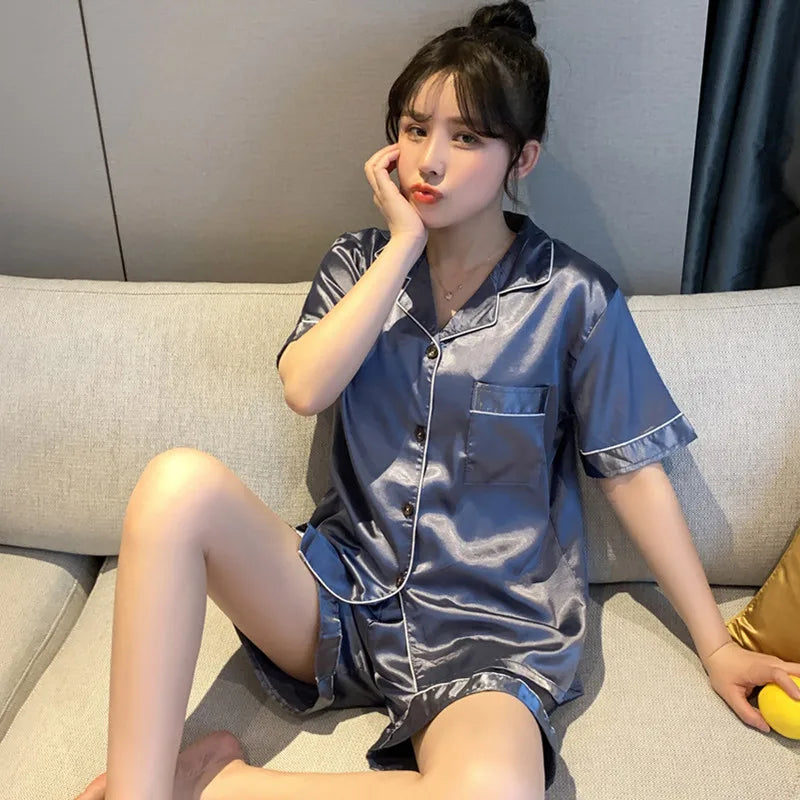Do 2 Year Olds Wear Onesies? A Comprehensive Guide to Toddler Clothing Transition
Table of Contents
- Introduction
- The Benefits of Onesies for Toddlers
- When Do Toddlers Typically Stop Wearing Onesies?
- Signs Your Toddler is Ready to Transition
- Alternatives to Onesies for Comfortable Sleep and Play
- Tips for Making the Transition Easy and Enjoyable
- Conclusion
- Frequently Asked Questions (FAQs)
Introduction
As parents, we often find ourselves captivated by the adorable outfits our little ones wear. The sheer cuteness of a baby in a onesie can melt anyone's heart. Onesies are not just stylish; they serve a practical purpose, making diaper changes easier and ensuring comfort for our children. However, as our toddlers grow, the question arises: do 2-year-olds wear onesies?
This inquiry isn’t merely a matter of fashion; it touches on developmental milestones, comfort, and practicality. The transition from onesies to more traditional two-piece outfits can be bittersweet for parents who relish every moment of their child's babyhood. In this blog post, we'll explore the various aspects surrounding the use of onesies for two-year-olds, including when to transition away from them, the benefits of onesies, and what alternatives exist for growing toddlers.
By the end of this article, you will have a deeper understanding of the significance of this transition and practical insights into how to navigate it smoothly. We’ll cover the following topics:
- The benefits of onesies for toddlers
- When do toddlers typically stop wearing onesies?
- Signs that indicate your toddler is ready to transition
- Alternatives to onesies for comfortable sleep and play
- Tips on making the transition easy and enjoyable
Let’s dive into this journey of clothing transition together.
The Benefits of Onesies for Toddlers
Before we discuss when to phase out onesies, let's take a moment to appreciate their numerous benefits.
Convenience
One of the standout features of onesies is their convenience. Designed with snap closures at the bottom, they make diaper changes a breeze. This is especially significant considering that toddlers can require multiple changes daily. With a onesie, there’s no need to fuss with multiple layers of clothing—one simple outfit covers it all!
Comfort
Comfort is key when it comes to toddler clothing. Onesies are typically made from soft, breathable fabrics that don’t irritate sensitive skin. Their snug fit helps keep diapers in place, reducing leaks and messy blowouts, which are common challenges for parents.
Security
For many toddlers, wearing a onesie provides a sense of security. The garment’s snug fit can be soothing, especially at bedtime, as it mimics the feeling of being swaddled—a comforting sensation that many babies enjoy.
Style Versatility
Onesies come in various styles, colors, and designs, making it easy to find the perfect look for any occasion. Whether your little one is lounging at home, attending a family gathering, or playing at the park, there’s a onesie for every situation.
Developmental Benefits
Beyond physical comfort, wearing onesies can also have emotional and developmental advantages. They allow toddlers the freedom to move and explore without the constraints often found in more complex outfits. This freedom can encourage active play, which is crucial for a child’s growth.
When Do Toddlers Typically Stop Wearing Onesies?
While onesies have many benefits, they are not a lifelong wardrobe staple. Most toddlers typically transition away from onesies between the ages of 12 months and 24 months. However, the exact timing varies based on several factors, including:
- Physical Development: As toddlers grow, their bodies change. They may begin to outgrow the fit of a onesie as their torsos lengthen and their mobility increases. Walking and climbing can make a one-piece outfit less practical.
- Potty Training: Many toddlers start potty training between 18 and 24 months. During this phase, the snap closures of onesies can become cumbersome, prompting parents to consider more user-friendly clothing options.
- Personal Preference: As children grow, they begin to develop their own preferences. Some may express a desire for more freedom in their clothing choices, leading to a natural phase-out of onesies.
- Seasonal Changes: Weather conditions can also influence clothing choices. In warmer months, parents may opt for lighter two-piece outfits that allow for better breathability.
Key Age Range
Research indicates that most children stop wearing onesies frequently by the age of 2 to 4 years. However, this is not a hard and fast rule; each child is unique. Some may still enjoy the comfort of a onesie beyond the age of 2, especially during sleep.
Signs Your Toddler is Ready to Transition
Recognizing the right time to transition your toddler from onesies can help ease the shift for both parent and child. Here are some signs to look for:
Increased Mobility
As toddlers become more active, they may find that a one-piece outfit restricts their movement. If you notice your little one struggling to climb, crawl, or play freely while wearing a onesie, it may be time to explore alternatives.
Demonstrating Independence
If your toddler begins to show an interest in dressing themselves, they may prefer two-piece outfits that are easier to put on and take off. Encouraging this independence is an important developmental milestone.
Potty Training Progress
Once your child begins potty training, the practicality of wearing a onesie diminishes. If they express frustration with the snaps during bathroom visits, it’s a clear indicator that a transition is needed.
Personal Preferences
If your child starts expressing a preference for certain types of clothing—such as wanting to wear pants or t-shirts—listen to their cues. Children often enjoy having a say in their wardrobe choices, and accommodating their preferences can make the transition smoother.
Alternatives to Onesies for Comfortable Sleep and Play
Once the decision is made to transition away from onesies, parents can explore several comfortable alternatives that cater to their toddlers' needs.
Pajama Sets
Two-piece pajama sets are a popular choice for toddlers transitioning from onesies. They come in various styles and fabrics, allowing for flexibility and comfort. Look for sets made from soft, breathable materials that mimic the comfort of onesies.
Nightgowns
For parents who prefer a one-piece option, nightgowns can be an excellent alternative. They are loose-fitting, making them easy for toddlers to put on themselves, and they provide ample room for movement during sleep.
Tops and Pants
Soft, stretchy tops paired with comfortable pants are another fantastic option. This combination allows for easy dressing and undressing, which is especially useful during potty training. Choose fabrics that are gentle on the skin to ensure maximum comfort.
Layering Options
As the seasons change, layering becomes essential. Parents can mix and match lightweight tops and bottoms, using cardigans or jackets as needed to keep their toddlers warm without resorting to onesies.
Tips for Making the Transition Easy and Enjoyable
Transitioning away from onesies can be a significant change for both you and your toddler. Here are some tips to make the process as smooth as possible:
Involve Your Toddler
Let your child be a part of the decision-making process. Take them shopping for new clothes or have them choose outfits from their existing wardrobe. This involvement can help them feel more in control and excited about the change.
Gradual Transition
Instead of making a sudden switch, consider gradually introducing new outfits. Start by mixing in two-piece sets along with their favorite onesies. This way, they won't feel overwhelmed by the change.
Positive Reinforcement
Celebrate the transition with praise and encouragement. Compliment your toddler when they wear new outfits or attempt to dress themselves. Positive reinforcement can boost their confidence and make them more willing to embrace the change.
Maintain Comfort
Ensure that any new clothing options are soft, comfortable, and easy to wear. Familiar fabrics will help your toddler feel secure as they adjust to their new wardrobe.
Create a Fun Routine
Establishing a bedtime routine that incorporates their new clothing can make the transition enjoyable. For instance, you could read a bedtime story while they wear their new pajamas to create positive associations with the change.
Conclusion
In conclusion, the question of whether 2-year-olds wear onesies leads us to a broader conversation about growth, comfort, and personal preferences in clothing. Onesies offer numerous benefits, from convenience to comfort, but as toddlers develop and gain independence, the transition to two-piece outfits becomes inevitable.
Understanding the signs that indicate it's time to make this transition, as well as exploring suitable alternatives, can ease this process. Involving your child, reinforcing positive experiences, and ensuring their comfort are key strategies for a successful shift.
As we navigate this journey together, let us embrace the changes our children undergo, celebrating their growth and the new milestones they achieve. Whether your little one continues to wear onesies or transitions to delightful two-piece pajamas, the most important thing is that they feel comfortable and loved during this exciting time of discovery.
Frequently Asked Questions (FAQs)
1. What age do most kids stop wearing onesies?
Most toddlers transition out of onesies between the ages of 2 and 4 years. This can vary based on individual growth and development.
2. Are onesies safe for toddlers?
Yes, onesies are safe for toddlers when properly fitted. They provide comfort and warmth but may become impractical as children grow and become more active.
3. Can my child wear onesies to daycare or preschool?
While it depends on the specific policies of the daycare or preschool, onesies are generally acceptable for younger toddlers. However, as they approach potty training age, transitioning to two-piece outfits may be recommended.
4. What should my child wear to bed instead of a onesie?
Alternatives include two-piece pajama sets, nightgowns, or soft tops and pants. These options provide comfort and allow for easier dressing, especially during potty training.
5. How do I know if my child is ready to transition from onesies?
Signs include increased mobility, a desire for independence, frustration during potty training, and personal preferences for different clothing styles. Pay attention to these cues to determine the best time to transition.
Together, we can navigate these changes, ensuring our little ones remain comfortable and stylish as they grow.



